Abstract
Water loss from the skin of term and preterm babies, nursed naked in incubators under neutral thermal conditions, was measured by a method based on estimating the water vapour pressure gradient close to the skin surface. 199 sets of measurements were made on 78 babies whose gestational ages ranged from 26 to 41 weeks, during the first 4 weeks of life. Babies of 34 to 41 weeks' gestation had high water losses in the first 4 hours after birth, which then fell to low levels averaging 6 g/m2 per hour. Babies of 30 to 33 weeks' gestation had high water losses in the first week which then fell to levels similar to those of mature babies. Babies less than 30 weeks' gestation had strikingly high losses, averaging 32 g/m2 per hour in the first 4 days of life. At 2 weeks, levels were still higher than those of mature babies. Light-for-dates babies had skin water losses appropriate for their gestations. The high water losses in extremely preterm babies are probably transepidermal and the result of a thin, poorly keratinised stratum corneum. Water loss from the palms and soles was high in term babies and although low in preterm babies it rose steadily in the first 4 weeks of life. This is thought to represent the onset of emotional sweating. In terms of actual heat and water lost, skin water loss is relatively unimportant in term babies nursed naked under neutral thermal conditions. However, in babies less than 30 weeks' gestation, weighing less than 1 kg, skin water loss makes a major contribution to overall water balance. Furthermore, evaporative heat loss from the skin may exceed resting heat production. It is suggested that reduction of skin water loss in these babies may increase their chances of survival and their rates of growth.
Full text
PDF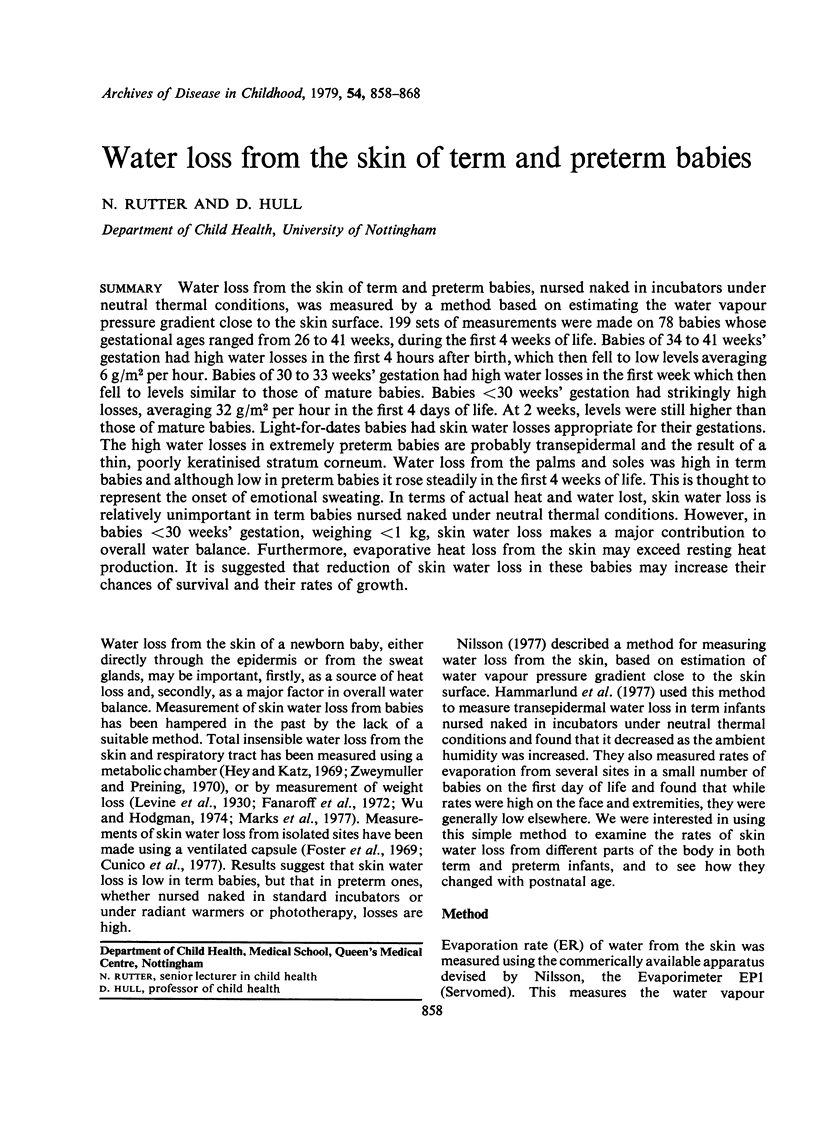

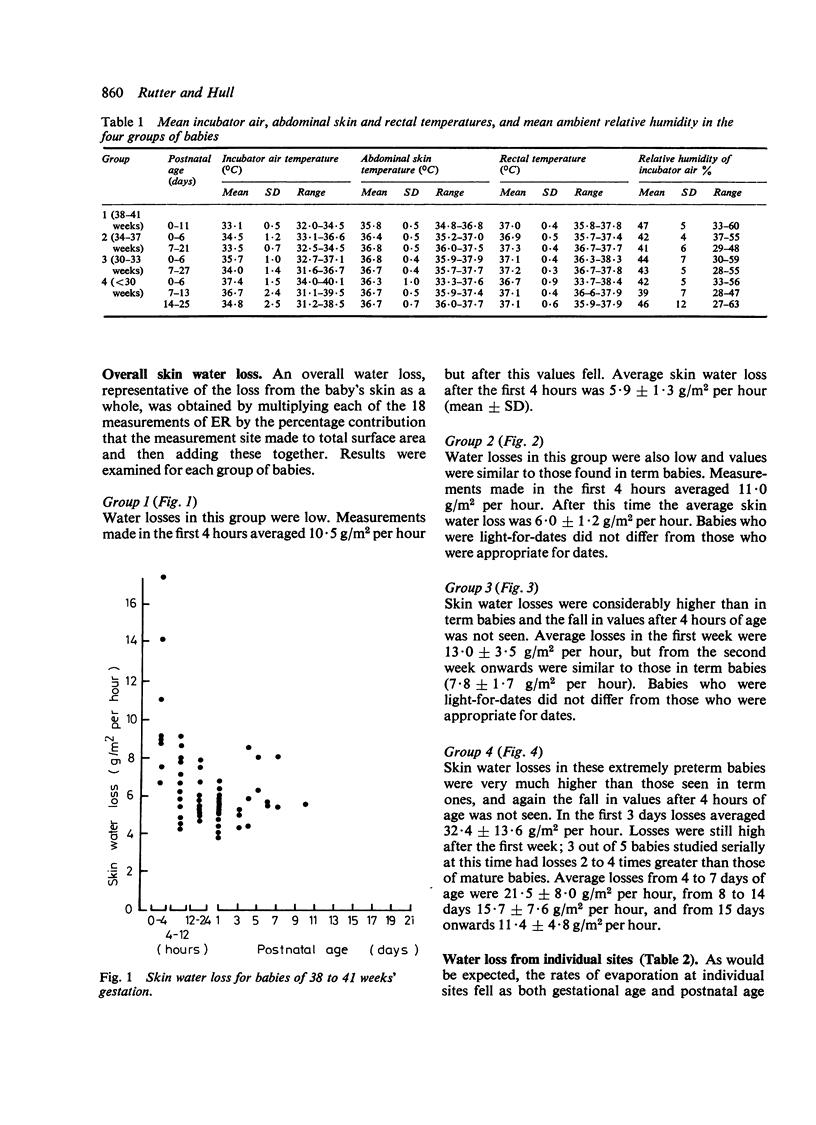

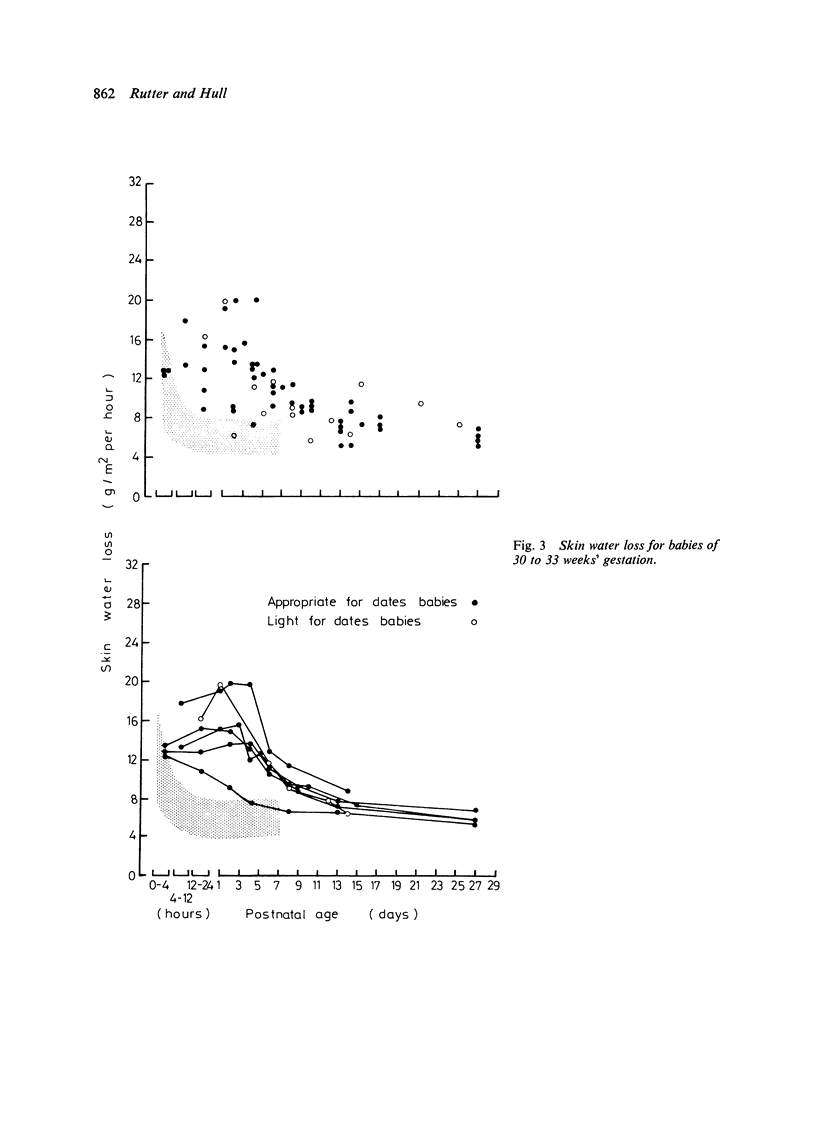
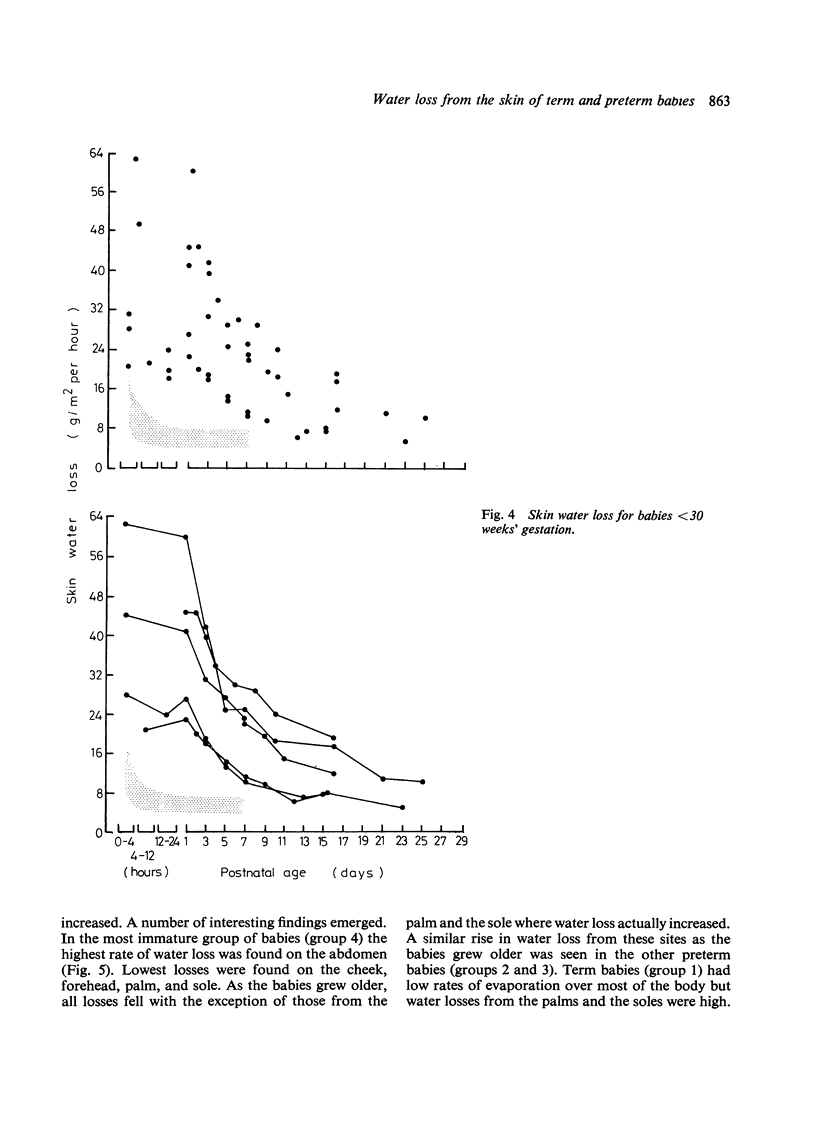
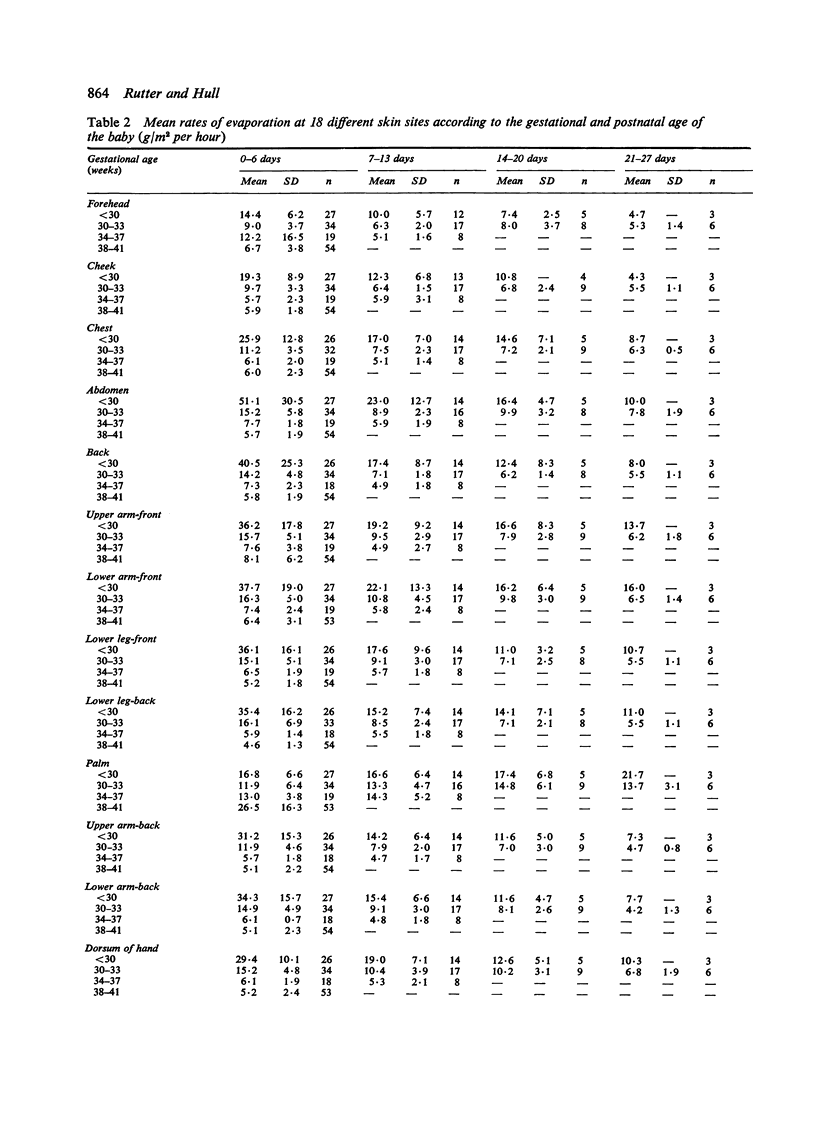
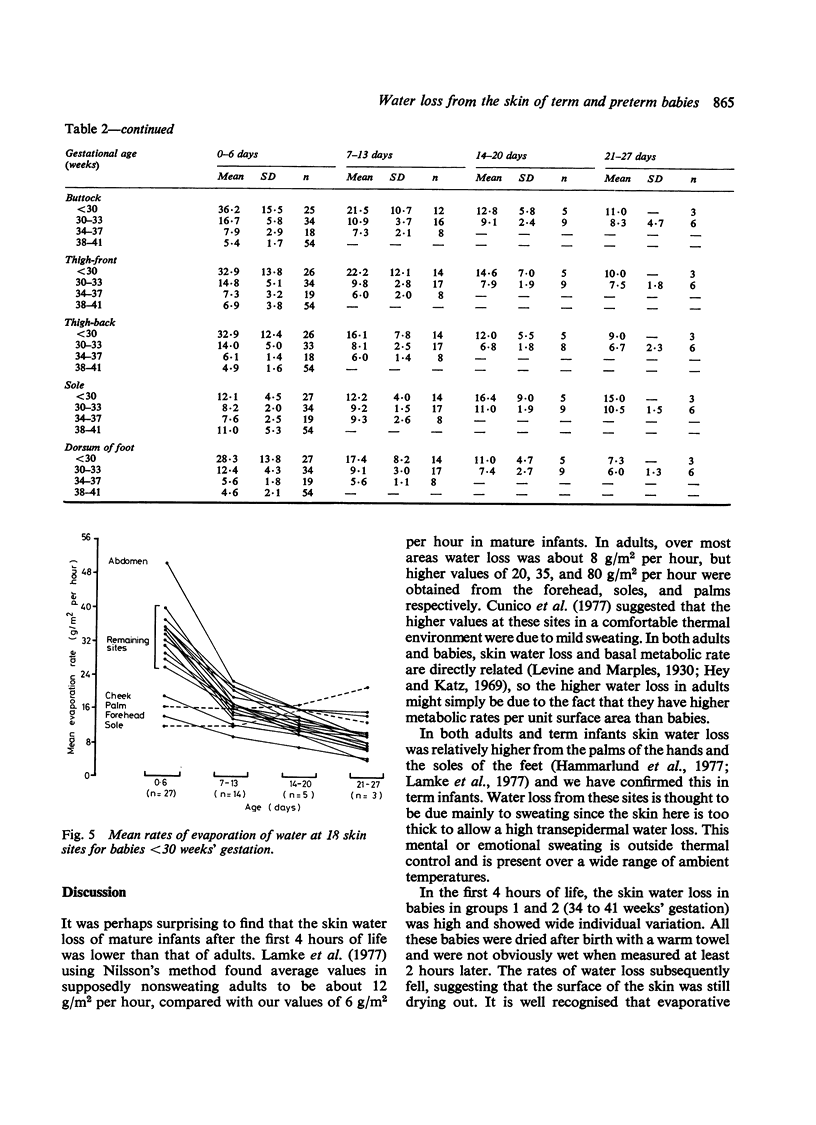
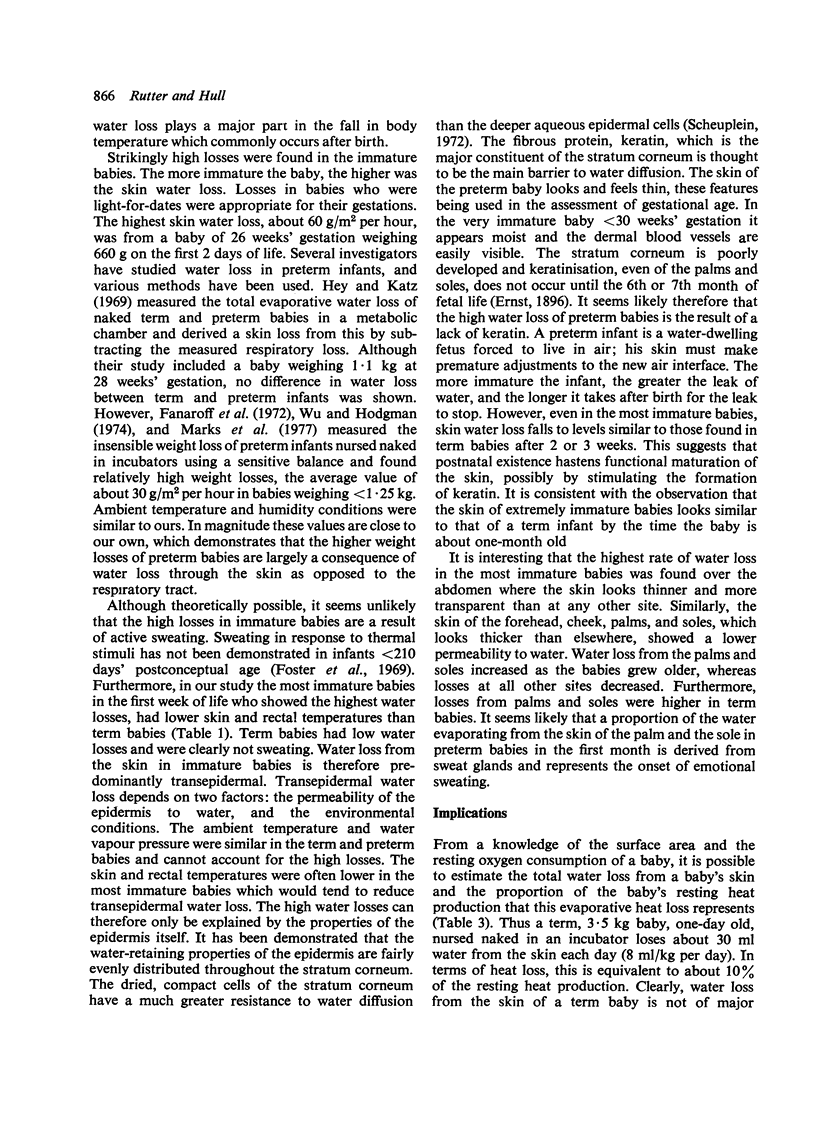

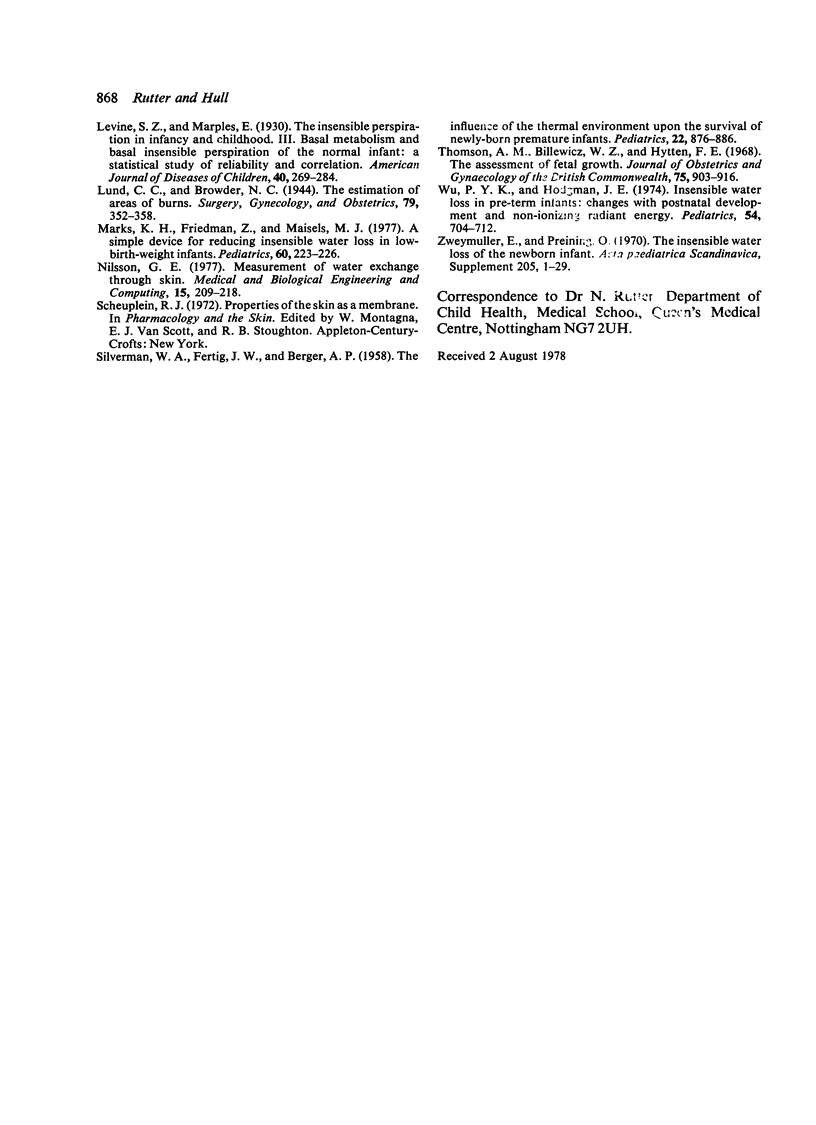
Selected References
These references are in PubMed. This may not be the complete list of references from this article.
- Babson S. G., Behrman R. E., Lessel R. Fetal growth. Liveborn birth weights for gestational age of white middle class infants. Pediatrics. 1970 Jun;45(6):937–944. [PubMed] [Google Scholar]
- Cunico R. L., Maibach H. I., Khan H., Bloom E. Skin barrier properties in the newborn. Transepidermal water loss and carbon dioxide emission rates. Biol Neonate. 1977;32(3-4):177–182. doi: 10.1159/000241013. [DOI] [PubMed] [Google Scholar]
- DAY R. L., CALIGUIRI L., KAMENSKI C., EHRLICH F. BODY TEMPERATURE AND SURVIVAL OF PREMATURE INFANTS. Pediatrics. 1964 Aug;34:171–181. [PubMed] [Google Scholar]
- Fanaroff A. A., Wald M., Gruber H. S., Klaus M. H. Insensible water loss in low birth weight infants. Pediatrics. 1972 Aug;50(2):236–245. [PubMed] [Google Scholar]
- Farr V., Kerridge D. F., Mitchell R. G. The value of some external characteristics in the assessment of gestational age at birth. Dev Med Child Neurol. 1966 Dec;8(6):657–660. doi: 10.1111/j.1469-8749.1966.tb01823.x. [DOI] [PubMed] [Google Scholar]
- Foster K. G., Hey E. N., Katz G. The response of the sweat glands of the newborn baby to thermal stimuli and to intradermal acetylcholine. J Physiol. 1969 Jul;203(1):13–29. doi: 10.1113/jphysiol.1969.sp008846. [DOI] [PMC free article] [PubMed] [Google Scholar]
- Glass L., Silverman W. A., Sinclair J. C. Relationship of thermal environment and caloric intake to growth and resting metabolism in the late neonatal period. Biol Neonat. 1969;14(5):324–340. doi: 10.1159/000240198. [DOI] [PubMed] [Google Scholar]
- Hammarl-nd K., Nilsson G. E., Oberg P. A., Sedin G. Transepidermal water loss in newborn infants. I. Relation to ambient humidity and site of measurement and estimation of total transepidermal water loss. Acta Paediatr Scand. 1977 Sep;66(5):553–562. doi: 10.1111/j.1651-2227.1977.tb07946.x. [DOI] [PubMed] [Google Scholar]
- Hey E. N., Katz G. Evaporative water loss in the new-born baby. J Physiol. 1969 Feb;200(3):605–619. doi: 10.1113/jphysiol.1969.sp008711. [DOI] [PMC free article] [PubMed] [Google Scholar]
- Hey E. N. The relation between environmental temperature and oxygen consumption in the new-born baby. J Physiol. 1969 Feb;200(3):589–603. doi: 10.1113/jphysiol.1969.sp008710. [DOI] [PMC free article] [PubMed] [Google Scholar]
- Hey E., Mount L. Temperature control in incubators. Lancet. 1966 Jul 23;2(7456):202–203. doi: 10.1016/s0140-6736(66)92481-0. [DOI] [PubMed] [Google Scholar]
- Lamke L. O., Nilsson G. E., Reithner H. L. Insensible perspiration from the skin under standardized environmental conditions. Scand J Clin Lab Invest. 1977 Jun;37(4):325–331. doi: 10.3109/00365517709092637. [DOI] [PubMed] [Google Scholar]
- Marks K. H., Friedman Z., Maisels M. J. A simple device for reducing insensible water loss in low-birth-weight infants. Pediatrics. 1977 Aug;60(2):223–226. [PubMed] [Google Scholar]
- Nilsson G. E. Measurement of water exchange through skin. Med Biol Eng Comput. 1977 May;15(3):209–218. doi: 10.1007/BF02441040. [DOI] [PubMed] [Google Scholar]
- SILVERMAN W. A., FERTIG J. W., BERGER A. P. The influence of the thermal environment upon the survival of newly born premature infants. Pediatrics. 1958 Nov;22(5):876–886. [PubMed] [Google Scholar]
- Thomson A. M., Billewicz W. Z., Hytten F. E. The assessment of fetal growth. J Obstet Gynaecol Br Commonw. 1968 Sep;75(9):903–916. doi: 10.1111/j.1471-0528.1968.tb01615.x. [DOI] [PubMed] [Google Scholar]
- Wu P. Y., Hodgman J. E. Insensible water loss in preterm infants: changes with postnatal development and non-ionizing radiant energy. Pediatrics. 1974 Dec;54(6):704–712. [PubMed] [Google Scholar]


